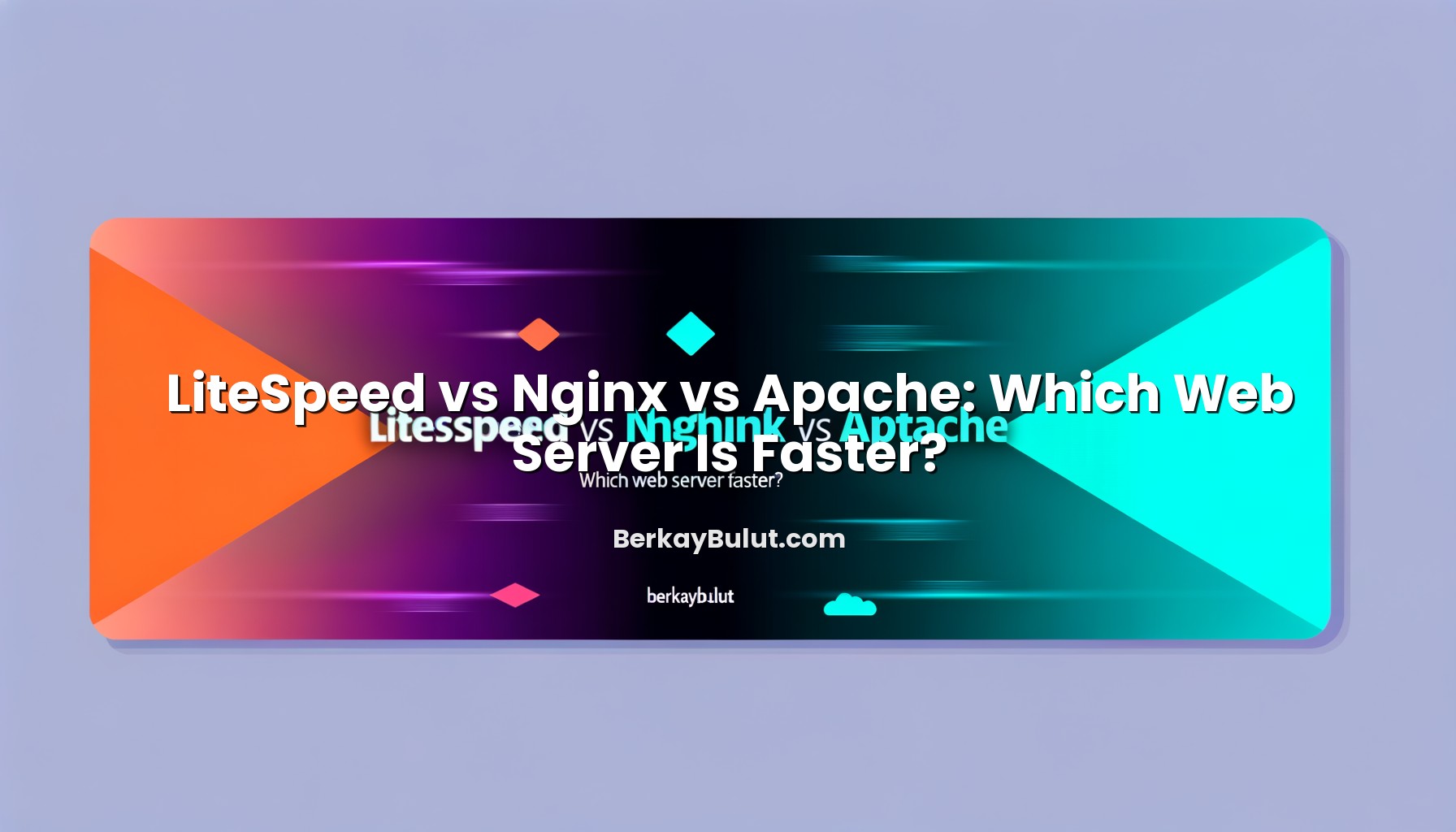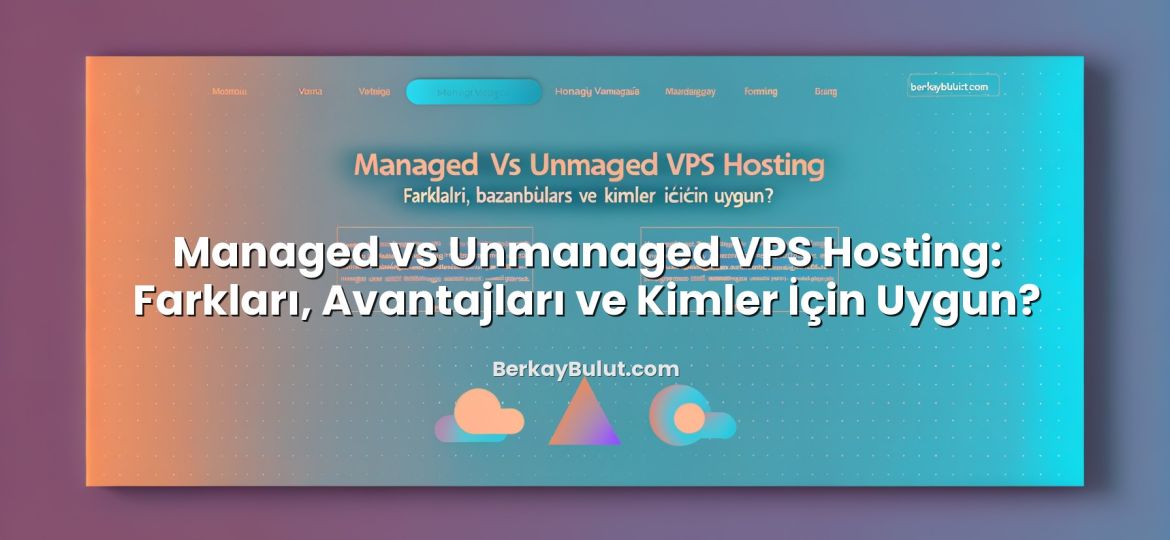When you care about website speed, you quickly run into the same question: should you use LiteSpeed, Nginx or Apache? All three can serve millions of requests per day, but they behave very differently under load. As someone who spends a lot of time tuning servers, I can say this clearly: your choice of web server can change your Time to First Byte (TTFB), CPU usage and even your hosting bill. In this article, we will focus on performance in real-world scenarios: WordPress sites, e‑commerce stores, APIs and high-traffic blogs. We will compare LiteSpeed, Nginx and Apache from an architectural and practical point of view, and we will talk about when it makes sense to switch – and when it doesn’t. By the end, you should have a clear idea which web server is likely to be fastest for your use case and how to configure your hosting environment around it.
What Does “Faster” Mean for a Web Server?
Before comparing LiteSpeed, Nginx and Apache, it is important to define what we mean by a “fast” web server. Speed is not just about a single page load time; it includes several metrics that affect user experience and SEO.
Key performance metrics
- Time to First Byte (TTFB): How quickly the server starts sending data after receiving a request. Critical for perceived speed and Core Web Vitals.
- Requests per second (RPS): How many requests the server can handle simultaneously without collapsing.
- Resource efficiency: How much CPU and RAM each connection consumes. This decides how many users your plan can support.
- Latency under load: How response times behave when traffic spikes or bots crawl your site heavily.
- Static vs dynamic performance: Serving a cached HTML file is very different from running PHP code and database queries.
In practice, your users care about overall response time and consistency. A server that is extremely fast at low traffic but degrades badly when 200 people hit your site at once is not a good choice. That’s why we will look at concurrency and caching as well, not just raw speed.
If you run WordPress, I strongly recommend you also read the WordPress hızlandırma rehberi on improving site performance, where we focus specifically on application-level optimizations like caching plugins, image compression and database tuning.
LiteSpeed: Performance-Oriented and Cache-Focused
LiteSpeed is a high-performance, event-driven web server designed to be a drop-in replacement for Apache. There is also OpenLiteSpeed, the open-source variant. Many managed hosting providers deploy LiteSpeed on their shared and VPS plans because it offers very strong performance, especially for PHP applications like WordPress.
Architecture and key features
- Event-driven architecture: Similar to Nginx, LiteSpeed uses a non-blocking, event-based model instead of creating one process per connection. This allows it to handle thousands of concurrent connections with low memory usage.
- Native LSCache integration: LiteSpeed’s biggest performance advantage for websites is built-in full-page caching. With the LSCache plugins for WordPress, Joomla, Magento and others, dynamic pages can be served as static files from memory or disk, with minimal overhead.
- Apache configuration compatibility: LiteSpeed understands most Apache configuration files and .htaccess rules, which makes migrations easier if you come from an Apache environment.
- Modern protocol support: HTTP/2 and HTTP/3 (QUIC) support is mature and easy to enable, which can noticeably reduce latency on mobile and high-latency connections.
Where LiteSpeed tends to be fastest
From real projects I’ve seen, LiteSpeed usually shines in these scenarios:
- High-traffic WordPress sites with caching enabled: When LSCache is correctly configured, LiteSpeed can serve cached pages extremely fast with very low CPU usage. Under heavy load, it often keeps TTFB stable while other stacks start to slow down.
- Busy WooCommerce or membership sites: Proper use of cache “vary” rules and ESI (Edge Side Includes) allows personalized content while still caching large portions of the page.
- Shared hosting environments: Because of its efficiency, hosting providers can safely put more customers on the same hardware without sacrificing performance.
Potential downsides
- Licensing: Full LiteSpeed Web Server is commercial software with licensing costs, which are typically baked into your hosting plan.
- Configuration specifics: While it supports many Apache directives, not all niche modules or custom setups work exactly the same. Some complex legacy configurations may need adjustments.
If you are on a managed VPS or dedicated server from a provider like DCHost, LiteSpeed is usually a strong candidate when your main workload is PHP-based websites and you care a lot about speed with caching.
Nginx: Lightweight, Flexible and Excellent for Static & Proxy
Nginx started as a solution to the C10K problem – handling ten thousand concurrent connections efficiently. It is now one of the most widely used web servers and reverse proxies on the internet. It is known for its small memory footprint and predictable performance under high concurrency.
Architecture and strengths
- Event-driven, non-blocking design: Like LiteSpeed, Nginx uses an event loop instead of per-connection processes or threads, which makes it very efficient for serving many simultaneous clients.
- Reverse proxy and load balancer: Nginx is often used in front of application servers (PHP-FPM, Node.js, Python, etc.) or even in front of Apache. It’s excellent for routing, SSL termination and load balancing.
- Static file performance: It is extremely fast at serving static assets such as images, CSS, JavaScript and cached HTML.
- Configuration flexibility: Its configuration syntax is clean and powerful once you get used to it, although it is less forgiving than Apache’s .htaccess system for end users.
Typical performance behavior
On equal hardware, with the same PHP-FPM and database backend, Nginx usually:
- Outperforms Apache for static content and high concurrency.
- Performs comparably to LiteSpeed for uncached dynamic content, assuming both are properly tuned.
- Uses less RAM per connection than a typical Apache prefork setup.
However, one important point: Nginx does not have a built-in full-page cache like LiteSpeed’s LSCache. You can implement powerful caching using Nginx’s proxy_cache, FastCGI cache or external tools, but it usually requires more manual configuration.
When Nginx is a great choice
- API backends and microservices: For REST/JSON APIs, Nginx in front of application servers is a very robust, high-performance solution.
- Static-heavy sites and file delivery: Media sites, asset servers and download hosts benefit from its efficient static file handling.
- Hybrid architectures: Nginx as a reverse proxy in front of Apache or other backends is common when you need both performance and Apache’s compatibility.
If you are planning a more complex architecture on a VPS or dedicated server, combining Nginx with upstream services and a CDN (Content Delivery Network) is a very strong, scalable approach. For a deeper look at CDNs, see the article What is a CDN and how does it work?.
Apache: Mature, Flexible, but Not Always the Fastest
Apache HTTP Server is one of the oldest and most widely deployed web servers. Its biggest advantages are flexibility, module ecosystem and compatibility. However, in its default configurations it is not always the fastest option for modern high-concurrency workloads.
How Apache handles connections
Apache supports several MPMs (Multi-Processing Modules):
- prefork: Uses one process per connection. Stable but heavy on RAM, typically used when running PHP as mod_php.
- worker: Multi-threaded, more efficient than prefork but still less efficient than event-driven servers at very high concurrency.
- event: Tries to handle keep-alive and idle connections more efficiently, moving closer to an event-driven model, but many setups still do not fully use its potential.
The classic “Apache is slow” conclusion usually comes from default prefork + mod_php configurations, which consume a lot of memory when many users connect at the same time.
Where Apache still makes sense
- Legacy applications and .htaccess-heavy sites: Apache’s .htaccess files allow per-directory configuration. Many CMSs and older applications rely on this feature.
- Complex module requirements: If you rely on specific Apache-only modules, migrating can be painful.
- Low to moderate traffic: For smaller sites, Apache can be perfectly adequate, especially when combined with a caching layer.
In modern setups, Apache’s performance is often improved by placing Nginx in front as a reverse proxy. Nginx handles SSL termination, static files and connection management, while Apache only processes dynamic requests, thus reducing its weaknesses.
LiteSpeed vs Nginx vs Apache: Realistic Performance Comparison
Instead of synthetic benchmarks, let’s look at real-world patterns I often see when testing or deploying these web servers.
Scenario 1: Cached WordPress blog or content site
- LiteSpeed: With LSCache properly configured, LiteSpeed usually delivers the best combination of low TTFB and low CPU/RAM usage. Many requests never hit PHP or the database.
- Nginx: With FastCGI cache (or a good application-level cache), Nginx can get very close to LiteSpeed’s performance, but it requires more manual tuning and careful cache invalidation rules.
- Apache: With something like mod_cache or an external caching proxy, Apache can be acceptable, but under high concurrency it typically uses more resources to deliver the same amount of traffic.
If most of your traffic hits cached pages, the differences between these servers might be small, as long as caching is well implemented. The big performance wins often come from enabling HTTP/2/3 and optimizing TLS. For that topic, see the guide on HTTP/2 and HTTP/3 (QUIC) and how to enable them on your hosting server.
Scenario 2: Dynamic e‑commerce or membership site
- LiteSpeed: Still very strong, especially if you configure LSCache to vary by user/session and use ESI for cart fragments or personalized blocks. It tends to stay stable under heavy concurrent checkouts.
- Nginx: Great choice when paired with well-tuned PHP-FPM and possibly an application-level cache for non-personalized parts. Performance is very predictable, and Nginx rarely becomes the bottleneck.
- Apache: Can serve such sites, but you must pay attention to PHP worker counts and memory usage. Under aggressive bot traffic or big marketing campaigns, it is more likely to hit resource limits.
Scenario 3: API backend and microservices
- Nginx: Often the default choice. Its reverse proxy, load balancing and rate limiting features make it ideal for APIs.
- LiteSpeed: Also capable, and in some cases faster, but its advantages are less pronounced when you are not leveraging LSCache and Apache compatibility.
- Apache: Possible but not ideal for high-volume APIs; most modern architectures use Nginx or a similar proxy in front.
In summary, for PHP-based websites, LiteSpeed often leads in real-world performance when you use LSCache. For static content and APIs, Nginx is usually the most popular and efficient choice. Apache still has its place, but rarely wins pure performance comparisons unless traffic is modest or heavily cached behind another layer.
How Hosting, Hardware and Network Affect Web Server Speed
One important reality: the web server is only one piece of the performance puzzle. Even the best-tuned LiteSpeed or Nginx configuration cannot compensate for poor hardware, slow disks or a badly chosen data center region.
Key infrastructure factors
- CPU and RAM: Underpowered VPS plans with 1 vCPU and low RAM will struggle under high concurrency regardless of whether you use LiteSpeed, Nginx or Apache.
- Storage: SSD or NVMe drives can dramatically reduce database and cache latency compared to older spinning disks.
- Network and latency: The physical distance between your users and your data center has a direct impact on response times. Choosing a region close to your main audience is crucial.
- Virtualization and resource contention: On oversold shared hosting, you are limited by what the provider allows. Even LiteSpeed cannot bypass strict CPU throttling.
If you are deciding where to host, I recommend reading how to choose data center location and server region for better SEO and website speed. Combining the right region with a well-tuned web server makes a noticeable real-world difference.
On VPS or dedicated solutions from providers such as DCHost, you have full control over the stack: web server, PHP-FPM, database, caching, firewall and monitoring. In that case, web server tuning should go hand in hand with good VPS server management practices like SSH hardening, updates and resource monitoring.
Practical Recommendations: Which Web Server Should You Choose?
There is no single winner for everyone. The “fastest” web server for your website depends on your application, traffic profile, management skills and hosting environment. Here are practical guidelines based on common situations I see.
If you are on shared hosting
- You usually cannot choose the web server directly; the provider decides.
- If your host offers LiteSpeed (or OpenLiteSpeed) on shared plans, that is often a good sign for WordPress and PHP sites.
- On Apache-based shared hosting, focus on caching plugins, image optimization and using a CDN; you still can achieve good performance.
If you run a managed VPS (e.g., with DCHost)
- Primarily WordPress / PHP sites: LiteSpeed with LSCache is usually the easiest way to get high performance with relatively simple configuration.
- Mix of PHP, Node.js, Python, etc.: Nginx as a reverse proxy in front of multiple backends is flexible and scalable.
- Legacy or heavy .htaccess usage: Apache may still be required; consider adding Nginx in front if you need better scalability later.
If you manage your own bare-metal or high-end VPS
For more advanced setups:
- Use Nginx in front for SSL termination, HTTP/2/3, static files and load balancing.
- Use LiteSpeed or Apache behind Nginx if you need their specific features (LSCache, Apache modules, etc.).
- Always combine with a CDN for global audiences; this offloads static assets and reduces latency.
Also, do not forget security and resilience. There is no point in having a fast server if it is vulnerable or unstable. On this blog we have detailed resources like a practical step-by-step guide on securing your VPS server, which pair nicely with performance tuning.
Conclusion: Speed Is a Stack Decision, Not a Single Setting
When you ask, ‘Which web server is faster, LiteSpeed, Nginx or Apache?’ the honest answer is: it depends on your stack and workload. In many WordPress and PHP scenarios with caching, LiteSpeed often delivers the best mix of speed and resource efficiency. For static content, APIs and flexible reverse-proxy setups, Nginx is usually the most popular high-performance option. Apache remains a solid, mature server that still powers countless sites, but it rarely wins pure speed contests unless placed behind another proxy or heavily optimized.
However, your final performance is shaped by much more than the web server: data center location, hardware resources, HTTP/2/3, TLS configuration, caching strategy, CDN usage and even your database schema all matter. I recommend treating web server selection as one step in a broader performance plan. Start by understanding your traffic and application, choose the server that fits best, then combine it with solid hosting (for example, a well-configured VPS from DCHost), proper monitoring and continuous optimization.
If you want to go deeper, explore the articles on HTTP/2 and HTTP/3 support, CDN fundamentals and WordPress performance tuning. Combine these with the right choice between LiteSpeed, Nginx and Apache, and you will have a fast, stable foundation for your website for years to come.










